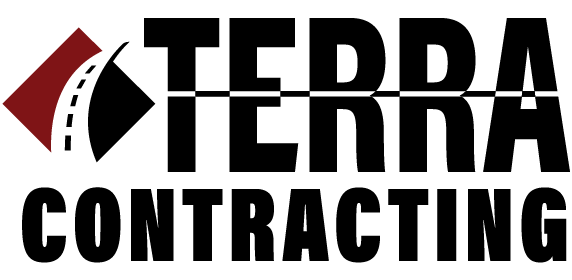When it comes to underground utility installation, precision isn’t just a best practice — it’s an absolute necessity. A single miscalculation or oversight during the installation process can lead to massive disruptions, costly repairs, and compromised public safety. Unfortunately, these situations happen more often than they should, and the consequences are anything but minor.
We’ve seen firsthand how one contractor’s mistake can escalate into a half-million-dollar emergency — and more importantly, how it could have been prevented by hiring the right team from the beginning.
Underground Utilities: High Stakes Beneath the Surface
Underground utility infrastructure forms the backbone of modern life — from fiber optics that power communication, to gas, electric, water, and sewer lines that keep cities running smoothly. Because so much of this infrastructure lies out of sight, it’s easy to underestimate the complexity involved in safely navigating and installing these systems.
Directional drilling, trench-less technology, and fiber optic placement all require meticulous planning, precise execution, and a deep understanding of subsurface conditions. When shortcuts are taken or inexperienced contractors are hired to save money up front, the long-term costs can be devastating.
A Real-World Reminder: The Cost of Inexperience
Experience Matters: A Costly Lesson in Utility Work
Terra Contracting was recently activated on an emergency response call by a major telecommunications provider after a directional drilling operation went wrong. A contractor, lacking proper subsurface utility knowledge and oversight, bored directly through multiple critical fiber optic lines during installation, triggering widespread service outages across the region.
As the telecom’s designated emergency utility partner, Terra Contracting mobilized immediately. Our crews performed a rapid damage assessment, coordinated with network engineers, and initiated restoration protocols to minimize downtime. Although we won’t disclose names or financial specifics, the remediation effort is expected to exceed $500,000 in total costs.
This incident is more than just a cautionary tale — it’s a clear demonstration of how inexperience in utility work can lead to serious operational and financial consequences. When it comes to underground infrastructure, cutting corners on expertise creates exposure, not savings.
What Makes a Utility Contractor “Qualified”?
Not all underground utility contractors are created equal. Experience, training, and a commitment to industry standards make a world of difference in how a project is executed and how risks are mitigated. Here are the key factors to consider when selecting a contractor for underground utility installation:
1. Proven Experience with Similar Projects
Look for contractors with a strong portfolio of completed projects similar in scope and complexity to your own. Experienced teams understand regional permitting requirements, soil conditions, and utility layouts, which helps minimize the risk of damage.
2. Safety and Compliance Certifications
A reputable utility contractor should adhere to OSHA standards and hold all necessary certifications and licenses. They should also maintain a thorough investigative process to learn from their own incidents, understand the root cause, and maintain continuous business improvement.
3. Subsurface Utility Engineering (SUE) Capabilities
Contractors who incorporate SUE principles — including utility locating, mapping, and risk assessment — drastically reduce the likelihood of damaging existing infrastructure.
4. Emergency Response Readiness
Even with the best planning, things can go wrong. A qualified contractor should have the ability to respond swiftly to emergencies, minimizing downtime and service disruptions.
5. Transparent Communication and Documentation
Clear communication throughout every stage of the project is critical. Look for partners who provide detailed project plans, communicate changes promptly, and maintain thorough documentation.
Directional Drilling: A Double-Edged Sword
Directional drilling below the surface is one of the most efficient and minimally disruptive methods for installing underground utilities, especially in urban environments. However, it’s also one of the most technically demanding.
Poorly planned or improperly executed directional drilling can lead to utility line damage, environmental concerns, or service outages, particularly when working around existing fiber optic infrastructure.
Contractors must use accurate utility locating technology, up-to-date GIS maps, and advanced boring techniques to avoid costly errors. Unfortunately, when contractors cut corners or fail to follow best practices, the results can be disastrous.
Emergency Utility Repair: Fast, Focused, Reliable
When utility lines are damaged, speed is critical — but so is precision. At Terra Contracting, our emergency response teams are trained to mobilize quickly, diagnose the issue, and implement a long-term fix that restores service and mitigates future risk.
In the case of the recent fiber optic incident, our crews worked around the clock to minimize service disruption for the client and their customers. A single cable carrying 432 fibers, each thinner than a human hair, was severed. Each of the fiber strands had to be spliced to 432 fibers of a healthy cable. Our expertise in emergency utility repair meant that we could navigate the problem with minimal collateral impact.
While we take pride in our ability to respond under pressure, we’d always prefer to see these emergencies prevented, and that starts with selecting the right utility contractor from day one.
The True Cost of Hiring the Wrong Contractor
The immediate repair bill may only be part of the cost. Hiring the wrong underground utility contractor can also result in:
- Fines and legal liability if public safety is compromised
- Reputational damage with clients or municipalities
- Project delays and missed deadlines
- Unforeseen expenses from secondary damage or rework
- Customer dissatisfaction due to service outages
These risks far outweigh any initial cost savings gained by selecting a lower-bid contractor without the right qualifications.
Choose Expertise Over Assumptions
The stakes of underground utility work are too high to leave to chance. As the recent incident shows, one mistake by an underqualified contractor can result in major disruptions and hundreds of thousands of dollars in unplanned expenses.
Choosing a qualified underground utility contractor is more than a line item on your budget — it’s an investment in your project’s success and your reputation.

